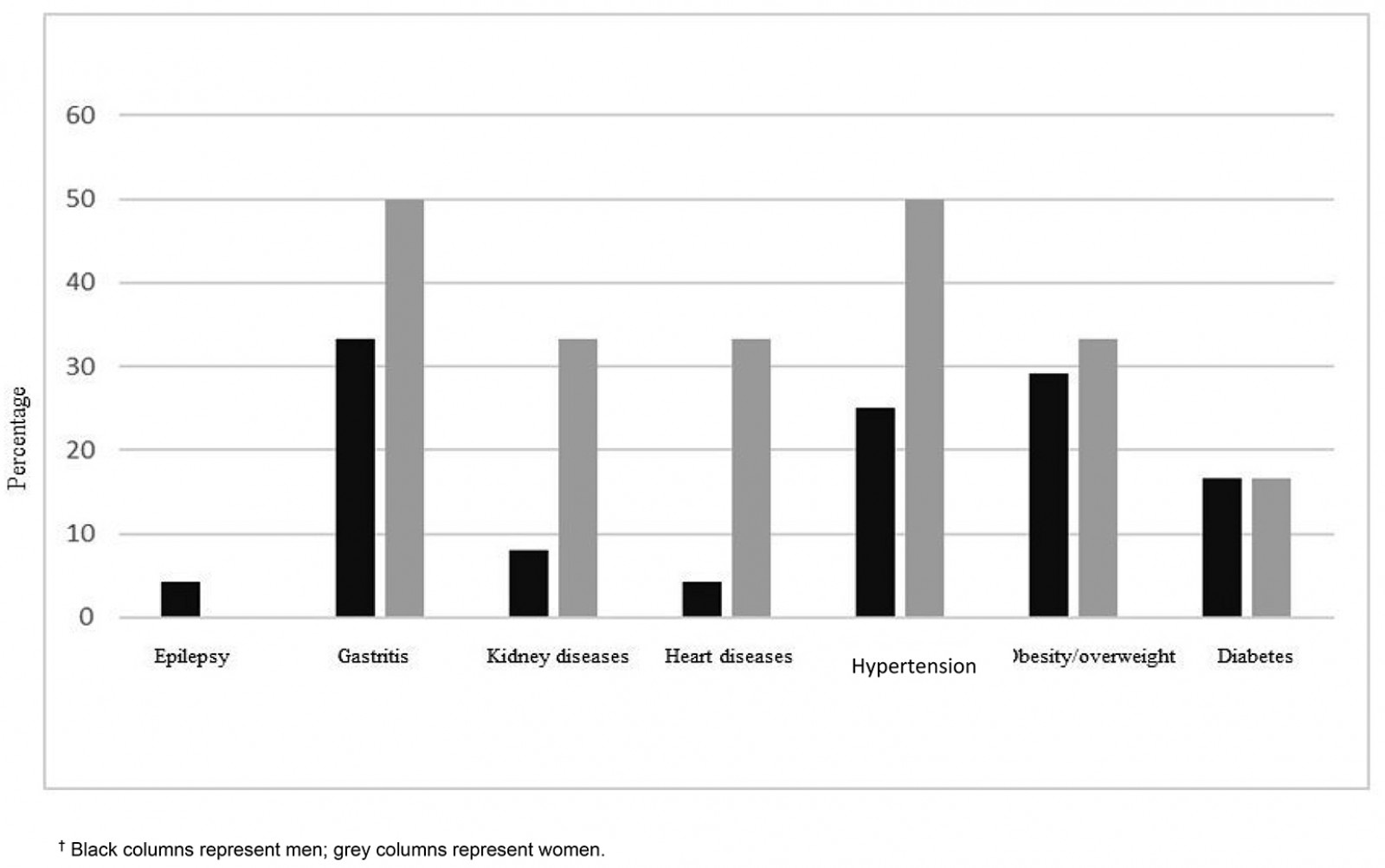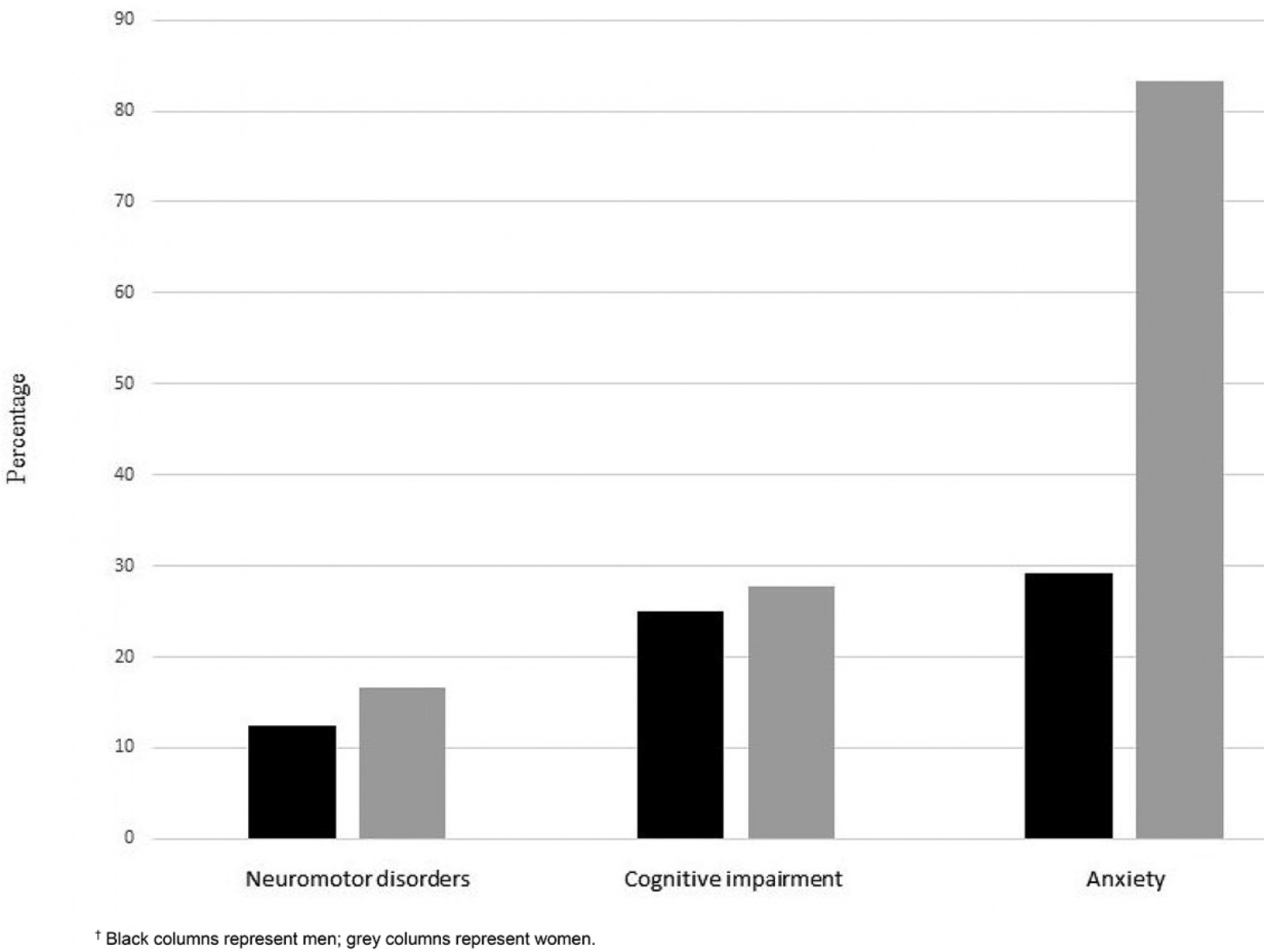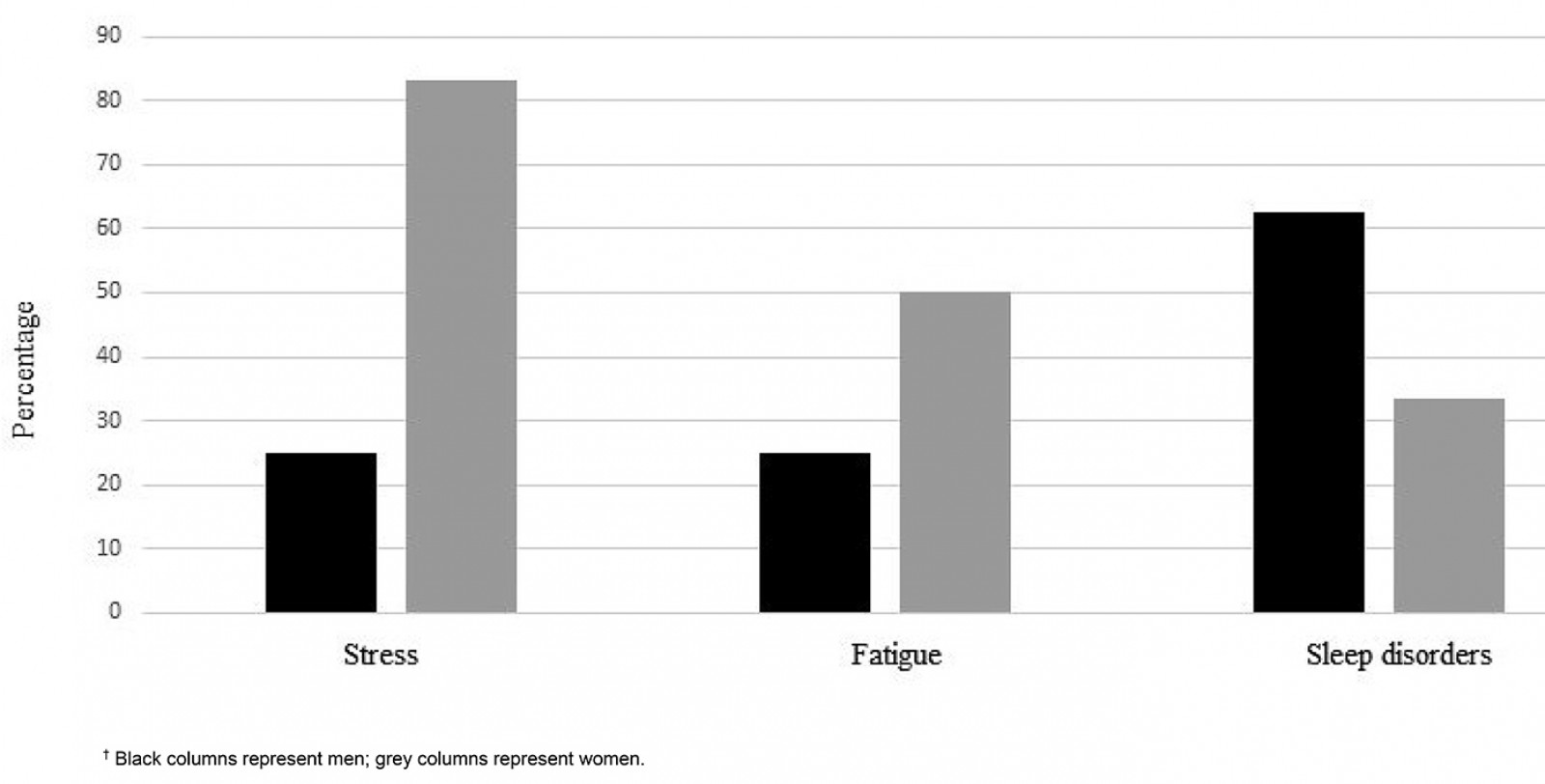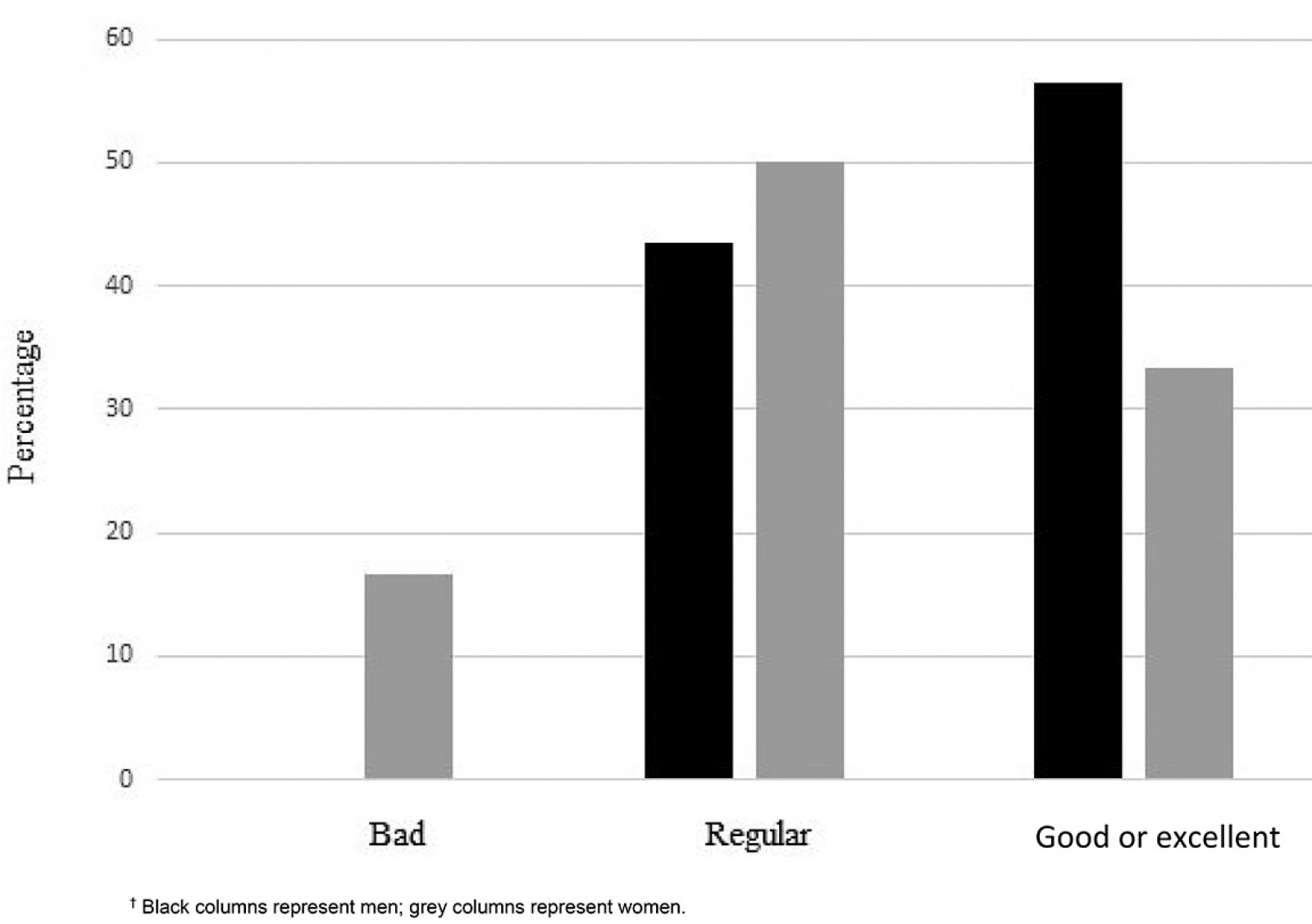Introduction
Strict health and environmental laws as it represents health risks for consumers, workers, and the environment regulate the Brazilian slaughter industry. Slaughterhouse workers are at high risk of accidents and contamination with pathogens1 (eg Leptospira spp., Brucella abortus, Erysipelothrix rhusiopathiae and Mycobacterium spp.). Butchers (employees who slaughter and skin animal carcasses) are the professionals most susceptible to health risks to accidents with knives, hooks, machines, hot materials and pieces of meat2.
In Brazil, there are around 5500 municipalities without a health inspection service for the slaughter and sale of meat3. Around 1.1 million cattle were slaughtered under some type of health inspection service in Brazil in 2016. Of this total, the state of Bahia in Northeast Brazil accounted for 3.8% of the national slaughter of cattle. On the supply side, the national estimate of the total slaughtered without any type of sanitary inspection was 14.1% in 2015. However, this is likely to be underestimation, with illegal slaughter numbers thought to be greater4,5. Despite this large meat production, there are still no large slaughterhouses or technology to inspect and guarantee the sanitary conditions in most Bahia municipalities – in other words, slaughtering in the state of Bahia is illegal.
The situation in Bahia has led to a high risk of diseases spreading from the slaughterhouses to consumers. This affects the population and the workers of this sector, especially butchers, markers and general slaughterhouses workers6.
As slaughtering in Bahia is an illegal activity, there are inherent difficulties to address the real situation of cattle slaughtering in the most remote areas. For example, slaughterhouses are usually under the influence of landowners and local enforcement organizations, which often act together in criminal activities. Therefore, the health of illegal slaughterhouse workers is unstudied in rural regions of Brazil.
In this study, the authors aimed to identify the self-reported health situation of illegal workers (men and women) from slaughterhouses of cattle and describe the risk factors for a rural municipality in Bahia.
Methods
The present investigation is a quantitative/qualitative study about the health of illegal butchers in a remote municipality in the state of Bahia in Northeast Brazil, with a population of approximately 20 000. (The municipality name is confidential for the safety of the interviewees and researchers because of the criminal activity investigated.)
The research had two parts: structured interviews and participant observation. The interviews were carried out using a structured questionnaire7-9 composed of 27 questions related to demography, health status and prevention methods used by the interviewees. Direct observations were made for 4 hours in two slaughter sessions by a researcher. The questionnaire was adapted from the validated version of the self-reporting questionnaire SQR-207 and from two studies on health problems found in slaughterhouses8,9. At the same time, the authors conducted a pilot study with direct slaughter observations in another location and interviewed some butchers who were not part of the sample. During the data collection, direct observations were made in two slaughter sessions by a researcher.
The research subjects were 30 cattle slaughterhouse workers, herein called butchers. The first interviews were with people known in the region, and they were questioned about the profession of a butcher. The names of 17 butchers were obtained. To achieve the goal of 30 interviews, the snowball method was adopted, by which an interviewee indicates one or more possible subjects to be interviewed. This method is especially advantageous for people in illegal conditions, the so-called ‘hidden population’10. All people indicated and approached agreed to be interviewed.
The following criteria for people inclusion were adopted: self-declare as a butcher, be active for more than 3 years, be of legal age, be able to respond orally, and accept to answer interview questions by signing an informed consent. The exclusion criteria were people aged less than 18 years or more than 60 years, cognitive inability to understand and/or answer the questionnaire, having an employment contract legalized as a butcher, and being a resident of another municipality.
Descriptive statistics were performed and the data presented as percentages. Men and women were analyzed together because of the small numbers of women in the sample. The interviews and observations were carried out between January and February 2019.
Ethics approval
The project was approved by the Ethics Committee on Research with Humans of the Federal University of Southern Bahia (CEP), no. 99171318.0.0000.8467.
Results
The results are presented in two parts: the demography and health aspects, which included the type of health problems and interviewee complaints. The percentages are the averages of responses, separated by gender.
Six women and 24 men were interviewed. Among men, more than half (54%) were aged less than 20 years, 22.7% between 20 and 30 years, 4.5% between 31 and 40 years, and 18.8% more than 50 years. The women’s ages were more equally distributed, with 16.7% aged less than 20 years, 16.7% between 20 and 30 years, 33.3% between 30 and 40 years, and 33.3% more than 50 years.
Regarding time of service, 87.5% of men had been working for 3–10 years, while 12.5% had been working for more than 20 years. Half the women had been working for more than 20 years, 16.7% for 10– 20 years, and 33.3% for less than 10 years. Only 29.1% of men completed elementary school; the remaining 70% had incomplete elementary school or were not literate. Among women, 66.7% had incomplete primary education or were not literate, 16.7% had completed primary education, and one had a higher education (not specified).
Monthly income was below a legal minimum salary for 62.5% of men and 16.7% of women. The remaining 38.5% of men and 66.7% of women made between one and two minimum salaries. One woman (16.6%) answered that the information on monthly money income ‘does not apply’. Half of men and women worked 7 days a week, 20.8% of men and 16.7% of women worked 6 days a week, and 29.2% of men and 33.3% of women worked 2–5 days a week.
About 91.7% of men and 50% of women stated that they had already observed lesions with possible clinical significance (diseases) in the animals’ carcasses. About 36.7% of men and 40% of women reported using personal protective equipment regularly while working. More than half of the men (58.7%) answered that they had already had accidents at work, while for women the percentage declared was 33.3%. Even with health complaints, 100% of men and 83.4% of women did not feel limited to continue working immediately after an accident or injury. Traumatic accidents involving sharp equipment, bruises or burns affected 50% of men and 33.3% of women. Allergic disorders were described by 18% of men and 26.8% of women. Half of the men and 66.75% of women had never left work for health reasons.
Pain complaints were stated by 33.3% of men and 66.6% of women. Men complained mainly of back pain (52.2%) followed by minor pain in the arms, legs, joints, headache, and non-specific pain. The greatest complaint of women was pain in the arms and joints (83.3% each), followed by back pain and pain in the legs (66.7% each). Half of the women complained of headaches and non-specific pain.
Men and women did not report cancer and depression, but they reported other diseases from chronic conditions or requiring hospitalization (Fig1). One of the men reported having had a stroke, while one of the women reported having had a heart attack. Gastritis and obesity were the most prevalent diseases for men in the study. Gastritis and hypertension were the most prevalent diseases among women.
Neurological and motor problems, such as tremors, difficulties walking and executing coordinated movements, affected 12.5% of men and 16.7% of women. Cognitive complaints, such as difficulties speaking, memory lapses and ‘difficulty to think’, were similar between men and women: 25% and 27.8%, respectively.
Women were 2.85 times more anxious than men (Fig2). Men reported feeling stress and fatigue at the same percentage (Fig3). Incidence of stress among women was high, and 50% reported fatigue (Fig3).
Regarding self-perception of general health status (Fig4), 43.5% of men reported a regular state, 56.5% a good or excellent state, and no man reported a perception of poor health. Among women, half (50%) reported their health as regular, 33.3% as good or excellent, and only one woman (16.7%) reported her health as bad.
 Figure 1: Health problems reported by male and female slaughterers (24 men, 6 women) from an illegal slaughterhouse in a municipality in the interior of Bahia, Northeast Brazil.†
Figure 1: Health problems reported by male and female slaughterers (24 men, 6 women) from an illegal slaughterhouse in a municipality in the interior of Bahia, Northeast Brazil.†
 Figure 2: Motor and psychological health complaints reported by male and female slaughterers (24 men, 6 women) from an illegal slaughterhouse in a municipality in the interior of Bahia, Northeast Brazil.†
Figure 2: Motor and psychological health complaints reported by male and female slaughterers (24 men, 6 women) from an illegal slaughterhouse in a municipality in the interior of Bahia, Northeast Brazil.†
 Figure 3: Stress, fatigue and sleep reported by male and female slaughterers (24 men, 6 women) from an illegal slaughterhouse in a municipality in the interior of Bahia, Northeast Brazil.†
Figure 3: Stress, fatigue and sleep reported by male and female slaughterers (24 men, 6 women) from an illegal slaughterhouse in a municipality in the interior of Bahia, Northeast Brazil.†
 Figure 4: Health status reported by male and female slaughterers (24 men, 6 women) from an illegal slaughterhouse, in a municipality in the interior of Bahia, Northeast Brazil.†
Figure 4: Health status reported by male and female slaughterers (24 men, 6 women) from an illegal slaughterhouse, in a municipality in the interior of Bahia, Northeast Brazil.†
Discussion
The study results strongly suggest that the health of butchers working in illegal conditions is vulnerable and aggravated by low socioeconomic conditions. In particular, women seemed to perceive their condition more than men and have more health problems.
For the safety of researchers and the interviewees themselves and due to restrictions of the ethics committee, images or sounds were not recorded. Researchers observed some slaughtering in loco, from the arrival of the cattle until the destination of the meat pieces. The slaughter is carried out in the field, in a rusty squeeze chute, with exsanguination of the animal and, soon after the fall, skinning to remove the leather and cut the parts. Some viscera are thrown at dogs and cats surrounding the slaughter scene, often licking the carcass of the slaughtered animal. The butchers throw the remains of the carcass into a nearby stream or to where birds and other wild animals will feed.
During carnage, the carcass is deposited in burlap sacks and, as it is separated, the parts are deposited in a small van without refrigeration. A worker called a fateiro boils large pieces of tallow in cauldrons. Men and women participate in the whole process, without individual protective equipment, wearing at most an apron and boots. During slaughter, children are allowed and even help with small tasks.
As part of the slaughter ritual, many butchers, particularly men, ingest cachaça, a drink with alcohol content, becoming visibly intoxicated. The water used in the process comes from cans previously transported to the site. Dogs, cats, chickens and ducks circulate around the activity, in an attempt to ingest pieces of meat and blood.
Thus, our observations suggest a succession of steps that violate the rules of hygiene, public health and protection of the environment. Given this scenario, it was not difficult to predict and find several health problems in slaughterers interviewed. The social condition and the underemployment of these people aggravate the health condition of the workers.
Low education level was widespread among male and female butchers, a condition also observed in legal slaughterhouses in two other states in Brazil2,11. Poorness and low education level are the backbone and pressure for underemployment. Many studies show that low income and low education level are associated with worse health conditions12,13. In some cases, this pressure leads people to illegal activities13, as appears to be the case in this study.
In industrial slaughterhouses, most young men are at work as there is no need for specialized labor3, which seems to be the case with the butchers in the present study. Young men are generally more disposed to engage in risky activities, which is a cause of premature mortality of this age–sex class14. The logic of labor relationships in rural capitalism is repeated among these workers, as the workforce represented by young men is a source of exploitation for a system that needs to generate dividends and production, regardless of the cost to health and lives15. The age group of women in charge of slaughtering is more balanced, with the majority being older than men, as reported by another study on a poultry slaughterhouse11. Compared to men, women have been involved in the slaughtering profession for a longer time and seem to assume more specialized roles, such as fateiros (people responsible for preparing animals' entrails), while not all men perform this function.
Contrary to the view about underestimation of women labor as butchers11, they make more money (relatively) than men. The greater experience in the trade can be a condition for the salary range of women to be above that of most male butchers. Dedication to more specialized roles contributes to women making more money than men. The economic condition of most male butchers is below the legal limits of remuneration and without any additional pay for unhealthy work. Likewise, a woman's declaration that her activity did not apply to remuneration for work fits into another type of relationship that of slave-similar condition, when the service is exchanged for merchandise such as leftover carcasses16. This relationship, unrelated to formal labor relations and in a condition similar to slavery, is still present in rural regions of Brazil16.
Some illegal activities aim for immediate gains with a high risk, but others are the result of social pressure for the most vulnerable people to occupy niches of underemployment and crime17. The activity of the butcher is linked to the oppression of a rural society rigidly stratified, where people who have less access to school education get the worst jobs18. The illegality of the activity removes individuals from society, which considers it a workforce to be protected by laws; in fact, individuals are outside the law, although not outside their rights to be protected by the law. The scope of the present study is not to analyze the conditions that lead to low salaries, neither adherence to illegality. However, it should be highlight that the region where this activity was carried out belongs to the countryside of Northeast Brazilian, which is poor and dependent on agricultural activity, deficient in public services and without job opportunities. In addition, the demand for meat in local and regional markets allows performing such activity with unskilled and idle labor. This set of factors contributes to the emergence of underemployment regions and a contingent of people for illegal activities.
Even workers who have an income of one to almost two minimum salaries have no employment relationships and, consequently, do not have their full rights as citizens. For example, the rate of absenteeism due to occupational health problems in legal slaughterhouses is high19, in contrast to what is reported for the butchers in the present study. This combination of vulnerability of job bonding and low pay is reflected in a workweek of up to 7 days for half of men and women, without weekly rest and, by deduction, without vacation and sickness dispensation rights when needed. This social framework has consequences for health due to accidents and chronic conditions.
In the present study, workers mentioned a high rate of accidents with sharp materials, bruises and burns in line with what has been reported in studies for workers in legal slaughterhouses2,6,8,19-22. The high rate of accidents is partly due to the low use of personal protective equipment. A study in the USA on health and healthy habits concluded that women take care of themselves more than men23, a known fact in medicine. It does not seem to be the case with these butchers because the low use of protective materials was similar between men and women.
Most men and half of the women had seen abnormal lesions in the animals' tissues, which suggests some type of disease. Contamination by pathogens in slaughterhouse workers is recorded in the scientific literature24. The butchers have some familiarity in distinguishing healthy tissues from tissues with carcass lesions, which leads to the suspicion that sick animals are being slaughtered in the region. The slaughter of sick animals that normally would not be destined for consumption shows the risk of butchers and the consuming population potentially vulnerable to zoonosis and epidemics.
The back pain reported by a high percentage of both genders suggests that neglect with the ergonomics of the activity, which also exists in legal slaughterhouses, is a common complaint of workers20,22. Gastritis is a common health problem reported by male and female butchers; this information contrasts with most injuries observed in slaughterhouse and slaughterhouse workers20,22, but not with other professional activities25, raising questions about its origin. Gastritis may have many causes, but a study on slaughterhouse workers in Bologna26, Italy, identified a relationship between direct contact with carcass meat and infection by Campylobacter jejuni and C. pylori, causing bacterial gastritis associated with precancerous lesions. The authors have proposed that gastritis caused by bacteria Campylobacter spp. should be classified as a zoonosis26.
Women reported a prevalence of arterial hypertension and men reported obesity as a problem. Worldwide, hypertension and obesity are frequent comorbidities. Hypertension is insidious and usually diagnosed at an advanced stage. Most of the Brazilian population is underdiagnosed and untreated for hypertension, which is one of the biggest public health problems27. The butchers in this study differed from most of the hypertensive population in Brazil27, whose percentage is estimated at 25%. Diabetes reaches equal proportions between men and women slaughterers, a different picture from society in general, where there is a higher prevalence among women28. Low education is associated with diabetes28, a condition that was also found in this study.
Living conditions and non-infectious physical conditions are expected to affect mental health (although the reverse may be true). The butchers' reports suggest emotional and cognitive disorders with clinical significance. There are different vulnerabilities for psychological disorders between genders. For example, women are more affected by anxiety disorders than men29. Risky professions and adverse work environments are common conditions for increasing the anxiety of workers. The state of poorness, helplessness, and involvement in an illegal activity, can exacerbate the anxiety of female butchers. Due to the high level of anxiety, it is not surprising that most women, compared to only a quarter of men, reported stress. Neither women nor men reported depression, in contrast to studies in industrial slaughterhouses where there are significant clinical rates30. This difference between anxiety and depression can be a matter of interpretation by the interviewees, a fact that the authors have not investigated.
The emotional disorder is accompanied by a report of fatigue, affecting women more than men. Graf and Coutinho11, studying the role of women and men in a poultry slaughterhouse, observed that women are given an extra day of leave for housework and parental care. In a patriarchal society, men are given fewer tasks apart from the role of ‘provider’, leaving them more time for leisure31. In this study, women's health appears to be much more vulnerable than men's health. Complaints of illnesses and psychological pressure were expressed more by women than by men. Women being a minority group among slaughterers already places them in unfavorable conditions in an eminently patriarchal, sexist and misogynistic society30,32.
It should be considered that there is a tendency for women to express their emotional states more. The interview made by a female researcher (LGFO) often facilitates the establishment of a link between the researcher and the investigated subject6, unveiling a certain phenomenon more clearly. In part, this may have been the case for men to be ‘more optimistic’ about their health status compared to female butchers, thus mystifying their true health status for the female interviewer. The pressure for standards that make men feel stronger and less sensitive is a well-known feature of Brazilian rural society30,32.
The cultural contribution for men to declare themselves more optimistic about their health cannot be overlooked when interpreting the data. Men in rural communities tend to seek more effective health services, with quick outcomes, strictly curative than preventive28. However, because most men are young, the capacity for metabolic, physical and immune resistance is more developed and faster, partially offsetting the challenges of daily life in an unhealthy and risky activity.
It is not possible to establish, a priori, a cause-and-effect relationship between these systemic diseases, as is done with accidents at work. Considering health is determined by both internal dimensions and the environment where an individual lives, unhealthy and adverse conditions can contribute to the emergence and severity of diseases10. Those conditions that exacerbate health problems and low health rates – such as low education, low pay, lack of social protection, lack of health education and illegal activity – exist for clandestine slaughterers.
Conclusion
In the present study, the health of illegal workers of cattle slaughtering is linked to poorness and low education level. The set of reports outlines a scenario of generalized illness, with physical and psychological problems at great proportions, evidence of a serious public health problem. This study makes a relevant and unprecedented contribution in addressing the health of butchers in illegal slaughterhouses in rural Brazil. Long-term and expanded research is needed, which may provide subsidies for public health policies aiming to minimize the risk of diseases resulting from the illegal slaughtering activity of cattle by a ‘hidden population’.
Acknowledgements
The authors are grateful to Mr Márcio José Gally Farias, who gave logistic and social support for the data collection.


